- Home
- Sebastian Junger
Fire Page 18
Fire Read online
Page 18
What is and isn’t justified by military necessity is, naturally, open to interpretation. One of the key concepts, though, is the law of proportionality. A military attack that results in civilian casualties—“collateral damage”—is acceptable as long as the military benefits outweigh the price that is paid by humanity. A similar concept is applied to weapons. No matter how many people you kill, using a machine gun in battle is not a war crime because it does not cause unnecessary suffering; it simply performs its job horrifyingly well. Exploding bullets, on the other hand, which were banned in the St. Petersburg Declaration of 1868, mutilate and maim foot soldiers without conferring any additional advantage to the other side. A wounded soldier is usually put out of commission when he is hit. There is no reason to maximize his suffering by using an exploding bullet.
Despite the graceful logic of these principles, warfare remains a chaotic business that will always resist governments’ efforts to legislate it. Still, it is all too clear that Serb forces in Kosovo violated just about every law in the book. Furthermore, the violations were carried out on such a massive scale that they also qualified as crimes against humanity—that is, they represented a widespread and systematic campaign against a particular population. Massacring noncombatants—as countless armies have done, including our own—is simply a war crime; trying to drive an entire group of people from your country is a crime against humanity. One could reasonably argue that the Turkish pogrom against the Armenians during World War I qualifies as a crime against humanity, as does the United States’ ethnic cleansing of Native Americans.
The novel thing about the 1949 humanitarian law was that it protected the citizens of an offending state as well as those of foreign states, and it applied to peacetime as well as war. Until then governments could do pretty much what they wanted with their own citizens; the most that another nation could do was express its “concern” over the situation. After 1949, in theory a government’s conduct at home would be subject to the same standards as its conduct abroad, and human rights abuses could no longer be dismissed as simply an “internal matter.” National sovereignty, in other words, would never again protect a government from the bite of the law.
The Hague’s press spokesman in Kosovo after NATO’s takeover was a young Englishman named Jim Landale. Dressed in jeans and a fleece jacket, with a backpack over his shoulder, he looked more than anything like a college student striding around the streets of Priština. After returning from Meja, I found him in the new UN headquarters, a concrete office building behind the huge, ghastly Grand Hotel at the center of town. A nearby apartment block was smoking slowly from an arson fire, and a lot of young ethnic Albanians were hanging out in front of the hotel, looking for work with the foreign journalists. Landale and I crossed the street to one of the cafés that had just opened and ordered the last two beers that it had in stock.
The tribunal’s full name is the International Criminal Tribunal for the Former Yugoslavia—or ICTY, as it’s commonly known. It was created in May 1993 to prosecute Bosnian war crimes, and it was later joined by another tribunal for Rwanda. The ICTY has successfully prosecuted several cases from the Bosnian War, mostly against Serbs, despite being hampered by evidence that was in some cases several years old. But it has never before investigated war crimes that were committed so recently, and it has never indicted a head of state during an ongoing armed conflict. Landale, between interruptions by cell phone, explained to me the ICTY strategy in Kosovo.
“This is our biggest undertaking by far,” he said. “We’re still trying to assess and prioritize all the sites. The murder of civilians is a war crime…what we’d try to assess would be: How do the various factors relate to our investigations for indictments against certain individuals?…Most villages have some sort of crime scene; every one’s got their massacre site just around the corner. To be realistic, we are not going to be able to visit every site in Kosovo.”
The criteria for prioritizing sites are unflinchingly pragmatic. One would think that Meja, where several hundred men were machine-gunned in a field, would make a better investigation site than, say, a house where just one family was wiped out. Or that the murder of twenty women and children in a basement would be easier to prosecute than the summary execution of twenty KLA soldiers after a battle. Not so; for the most part, sites are chosen simply for the quality of corroborating evidence that can be gathered. During the NATO bombing campaign, investigators in the refugee camps systematically recorded hundreds of eyewitness accounts of massacres; it was information from those interviews that led to the original indictment handed down in May. A small site with excellent eyewitness accounts, in the eyes of a war crimes prosecutor, is far more valuable than a large site with none.
Similarly, a massacre in an area where a certain military or paramilitary group—such as Arkan’s Tigers, who allegedly committed numerous massacres around Gjakovë—was known to have been working is higher priority than a massacre site where the killers are unknown. And a site that presents any sort of access problem is quickly superseded by one that can be worked on immediately. Land mines are considered an access problem, as are remote areas and sites with too many bodies. The amount of labor required to dig up even one body is considerable, so a mass grave like the one in Meja requires backhoes and bulldozers. The first crime teams flown into Kosovo didn’t think to bring any.
“One of our hopes is that the tribunal will work as a deterrent,” said Landale when I asked him—given the chance that Milošević will never be brought to trial—what the point of all this is. “And it will also help to relieve a collective sense of guilt. Not all people on one side are guilty—just certain individuals. The investigations should make that clear.”
There are more than a dozen crime teams in Kosovo, totaling some three hundred people. Scotland Yard, the Royal Canadian Mounted Police, and the FBI all have sent teams, as have police agencies from Germany, Denmark, France, Holland, and Switzerland. Their job is to photograph and diagram massacre sites named in the ICTY indictments and to gather such evidence as shell casings, bullets, bloody clothing, and anything else that might identify the killers and the method of death. Then the teams attempt to identify human remains—at least to the extent of knowing the age and sex—and conduct autopsies to determine the cause of death. The large mass graves with hundreds of bodies will be investigated months later, after the delicate surface evidence all has been gathered. Buried corpses change very slowly. Most of the evidence they contain is still there a year later.
The FBI team, consisting of sixty-four people and 107,000 pounds of equipment, arrived in Skopje on June 22 in an air force C-5. The team was completely self-sufficient, and it included, on loan from the Armed Forces Institute of Pathology, a forensic anthropologist, two forensic pathologists, and a criminalist, as well as FBI evidence collection experts, two caseworkers from Physicians for Human Rights, a trauma surgeon, and heavily armed Hostage Response Team agents. From Skopje, the team continued by marine helicopter and truck convoy to Gjakovë, where they set up their tents and field morgue under some shade trees inside the Italian Army field base. On the flight over, they got their first glimpse of Kosovo’s devastation: entire villages burned to the ground and cows lying in fields, their hindquarters blown off by land mines. Early the next morning in Gjakovë, they got to work.
They had to go no farther than across the street to investigate one of their first crime scenes, a house where Serb special police had executed six men in the middle of the night. A seventh man was wounded but didn’t die. He managed to crawl out of the house as it burned and—with the help of female relatives—eventually make it to Albania before dying from loss of blood.
The FBI quickly moved through three more sites in Gjakovë, including one where Serbs had taken twenty-five men at gunpoint and mowed them down with machine-gun fire. There were no survivors, but there were eyewitnesses, and again, their accounts were recorded by ICTY investigators. The ICTY was running into a problem, though: There
were so many bodies in Kosovo that every time it investigated a site, locals would tell the investigators about several more, and the list was growing almost exponentially. The FBI team, which had originally been charged with investigating only two sites, worked so quickly that the ICTY tacked seven more on. Most were in and around Gjakovë, and two were outside Peja, in the northwestern corner of the province.
The more remote of the two sites near Peja was known as the Well, outside a little village named Studenica. Around midday on April 12, Serb paramilitaries identifying themselves as Arkan’s Tigers executed nine people at a farmhouse and then dumped the bodies down the well. They then smashed the stone and mortar wall surrounding it and dropped the rubble down the hole. Two months later villagers returning to the area dug the well out and pulled up nine badly decomposed bodies. Eight of them were buried at some distance, but one—that of eighty-six-year-old Sali Zeqiraj—was buried in the yard in front of the farm.
I drove up to Studenica early in the morning with the FBI convoy. It was a beautiful spot, smack up against the Koritnik Mountains, with all Kosovo spread out below us. Plumes of smoke rose over the valley from Serb houses that had been set on fire by the KLA. The field had not been de-mined, so the FBI investigators climbed carefully out of their army vehicles and approached the farmhouse along the tire ruts that had been left by previous cars. Roger Nisley, leader of the mission, went ahead to scout the house out and then gathered the investigators in front of the lead Humvee. “It looks like shots were fired through the window,” he said. “So get a sketch of that. And we have a body here, apparently it’s the grandfather, but we have permission to dig up only one body. There is a total of nine.”
While evidence collection people photographed the house and picked through it for shell casings and bullet holes, four diggers started opening up the grave. Family members stood in the field, anxiously stripping grass stems—just far enough away that they didn’t have to see anything they didn’t want to see. Only one of them—a young man named Xhevat Gashi, who lived in Germany and had come back only the day before—stood close by. The body came up swaddled in clear plastic sheeting, tied with rope at both ends. The investigators, dressed in white Tyvex jump suits with face masks that pinched their nostrils closed, untied the rope and carefully unwrapped the body. The dead man was dressed in pants and socks and a plaid shirt; the investigators cut the clothes off him and laid him out on a blue tarp. He’d been in water for two months, and his flesh had a doughy look, as if he were a mannequin made out of bread. It was very hard to make a connection between the body on the tarp and a human being. Out in the field, one of the family members started to cry. Xhevat, the grandson, shifted on his feet and kept watching.
The investigators quickly found something of interest. “We have an entrance gunshot wound in the back of the head,” said Dr. Andrew Baker, one of the pathologists on loan from the Armed Forces Institute of Pathology. “You’ve got a sharp edge on the outside, blunt edge on the inside. I don’t see an exit wound so far.”
The fact that there was no exit wound was important because it meant that the bullet—a crucial piece of evidence—might still be in the skull. Baker made an incision in the back of the scalp and pulled the skin forward until he had peeled the face down like a thick rubber mask. Then he opened the skull and probed inside the cavity. It took fifteen minutes to search the skull and the countless folds of the brain; Baker found neither the bullet nor an exit wound. He pulled the face back up, reassembled the head, and rewrapped the dead man in plastic. Then the four diggers lowered him back into the grave.
One of the advantages to investigating a shooting murder (as opposed to a knifing or a bludgeoning) is that ballistics is a precise science and bullets act in fairly predictable ways. By reconstructing the path of a bullet—through a room or through a body—it is possible to know a lot about where it was fired from. For example, a round from an AK-47 assault rifle leaves the muzzle of the gun at twenty-three hundred feet per second, twice the speed of sound. When it hits a person, the density of the tissue forces the round to yaw to one side until it is traveling sideways or even backward. Shock waves ripple through the tissue and create a cavity that can be as much as eleven times the size of the bullet. The cavity lasts only a few thousandths of a second, but the shock waves that created it can shred organs that the bullet never even touches. In head wounds the temporary cavity is particularly devastating because the skull—being rigid—can respond to the sudden deformation only by bursting. If the gun barrel is actually touching the victim, rapidly expanding gases inside the barrel get trapped in the wound and blow blood and tissue back out. It is safe to assume that some of the killers in Studenica walked away covered in the people they killed.
Even if the bodies are not recovered, though, a very good idea of what went on at the moment of death can be had by something called bloodstain pattern analysis. Drops of blood splash differently depending on the angle at which they strike a hard surface, and arcsine equations can be used to reconstruct the path that the blood took through the air. If there are more than two bloodstains, something like triangulation can be used to figure out—down to an area about the size of a grapefruit—where in space they all originated. “That’s useful in saying, ‘Well, the person was standing up when they were shot,’” says Grant Graham, a criminalist with the Armed Forces Institute of Pathology. “‘The person was on their knees. The person was lying down.’…There are all different types of bloodstain patterns—swipes, wipes, drips, arterial spurts, gushes—and you can reconstruct what happens in the crime scene as things move along…. It’s a moving, flowing event.”
Unfortunately, many of the dead in Kosovo were burned beyond recognition. The report for 157 Millosh Gillic Street states that FBI investigators went to a burned-out residence and found “the skeletal remains of an indeterminate number of victims.” But even a charred pile of bones can contain enough evidence to identify the dead and the method of death.
“The human skeleton is a dynamic part of the body,” says Dr. Bill Rodriguez, the forensic anthropologist attached to the FBI team. “It is constantly altered by activity. In a runner, changes occur in the bones of the leg; in a dockworker, changes occur in the upper torso. Bones are just like fingerprints…their structures are so unique that you can make a positive identification.”
To identify the remains, the investigators need something to compare them with. Determining that you have a dead male in his mid-thirties who probably did a lot of heavy lifting doesn’t do much good unless you also have descriptions of missing people to pick from. X rays provide the most accurate matches, as do dental work and injuries, but absent those kinds of records, forensic anthropologists can still provide a huge amount of information about who was killed and how. There is only one right femur in a body, for example; the number of right femurs in a pile of bones tells you how many people there were. Not only that, but bones differ enough between sexes, races, and age groups that it is often possible to define quite narrowly who these people must have been.
In 1948 an anthropologist working for the army’s Office of the Quartermaster General—using war dead from Guadalcanal, Iwo Jima, and other Pacific battlegrounds—improved upon an already strong statistical connection between body height and femur length. If you multiply the length of the femur by 2.38 and then add 61.41 centimeters, you get the height of a person to within a fraction of a centimeter. Further military studies found that the shafts of the long bones of the body, known as the diaphyses, gradually form solid bonds with the caps of the bones throughout a person’s teens. Different bones solidify at different times, providing a good indication of the dead person’s age. Hundreds of dead American soldiers were identified using medical records and such statistical techniques; the same techniques can be applied to determine whether the dead in Kosovo’s mass graves match accounts given by people who witnessed the killings.
“From a war crimes standpoint, we document the number of individuals, determine the
sex ratio, and then determine the ratio of adults to children,” says Rodriguez. “From there, we can move on to identifying the dead individually. We can also find evidence of blunt force trauma, stab wounds, gunshot wounds, malnutrition, and torture…. We deal with death on a daily basis. We’re scientists of death.”
The FBI convoy rolled out of Studenica in midafternoon. The family had reconvened in front of the house and was going through a pile of clothes that had been pulled up from the well along with the bodies. There were ski parkas, blankets, sweaters, a fake-fur coat. One man spotted the fake fur, knelt on it, and started sobbing. Xhevat, the grandson who had just returned from Germany, stood around a little uncomfortably, unsure what to do.
“Tell me about him,” I said to Xhevat, pointing to the grave where the old man was now reburied.
“He was a farmer. He saw World War One and World War Two,” Xhevat said. “He was a soldier for the Germans in World War Two. He always lived right here; he never considered leaving. Everybody fled, but he didn’t. ‘You are on my land…. No one will come and throw us out of here,’ he would say.”
“How long are you staying?” I asked him.
“Oh,” Xhevat said, glancing at the rotting clothes in his front yard. “I go back to Germany on Friday.”
In February 1994 German police took into custody a Bosnian Serb named Dusko Tadić, who had been hiding in his brother’s apartment in Munich. Tadić had been recognized by Bosnian Muslims who had survived the infamous Serb death camp of Omarska, near the city of Prijedor. Tadić wasn’t officially in the Bosnian Serb Army—he was a local café owner and karate teacher—but he would show up in the evenings to direct personally the torture of chosen prisoners. An ICTY indictment one year later accused him of rape, torture, thirteen murders, and—in his most infamous act—forcing a prisoner to bite the testicle off another, who subsequently died. Two years later, after a trial that lasted from May to November 1996, he was convicted of violating the laws and customs of war and of crimes against humanity and was sentenced to twenty years in prison.

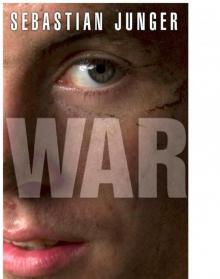 War
War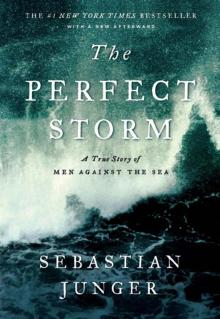 The Perfect Storm: A True Story of Men Against the Sea
The Perfect Storm: A True Story of Men Against the Sea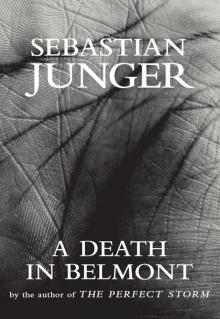 A Death in Belmont
A Death in Belmont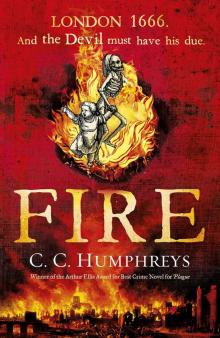 Fire
Fire The Perfect Storm
The Perfect Storm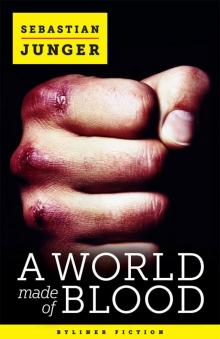 A World Made of Blood (Kindle Single)
A World Made of Blood (Kindle Single)